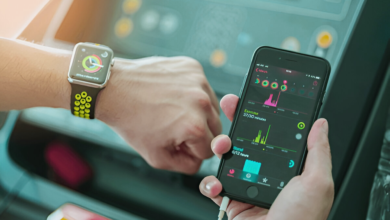
The COVID-19 pandemic served as a wake-up call for Pakistan’s healthcare system, exposing critical gaps in health monitoring while simultaneously accelerating digital innovation. Before the crisis, Pakistan’s disease surveillance relied heavily on fragmented, paper-based systems that struggled to provide real-time data for effective decision-making. However, COVID-19 the unprecedented challenges of the pandemic forced rapid adoption of digital solutions like telemedicine, AI-powered diagnostics, and mobile health applications, marking a significant shift in how health monitoring could be conducted in the country.
As Pakistan emerges from the pandemic, these technological advancements present an opportunity to build a more resilient and proactive health monitoring ecosystem. The integration of digital tools has demonstrated their potential to bridge urban-rural healthcare divides, improve disease surveillance, and enhance public health responsiveness. Moving forward, sustaining these innovations will be crucial for Pakistan to not only prepare for future health crises but also to transform its overall healthcare delivery system, making it more efficient, accessible, and data-driven for all citizens.
COVID-19 and the Future of Health Monitoring in Pakistan
The State of Pakistan’s Healthcare System Before COVID-19
Pakistan’s healthcare system has long struggled with structural challenges, including insufficient funding, a shortage of medical professionals, and disparities between urban and rural healthcare access. Prior to the pandemic, disease surveillance was largely manual, with limited real-time data collection and analysis capabilities. Public health initiatives often faced delays due to bureaucratic inefficiencies, and a lack of centralized health records made it difficult to track outbreaks effectively.
How COVID-19 Exposed Systemic Weaknesses
When COVID-19 struck, Pakistan’s healthcare system was thrust into crisis mode. Testing bottlenecks, insufficient ICU beds, and shortages of essential medical supplies revealed deep-rooted vulnerabilities. The initial response was hampered by a lack of real-time data, making it difficult to predict infection hotspots or allocate resources efficiently. Misinformation and vaccine hesitancy further complicated efforts, highlighting the need for better public health communication.
The Rise of Telemedicine and Digital Health Platforms
One of the most significant shifts during the pandemic was the rapid adoption of telemedicine. Platforms like Sehat Kahani, Marham, and Dawaai saw exponential growth as patients sought remote consultations to avoid crowded hospitals. The government also launched apps like COVID-19 Gov PK to provide real-time updates on cases and vaccination centers. These digital tools not only improved healthcare accessibility but also reduced the burden on overwhelmed facilities.
Mobile Health (mHealth) and Wearable Technology
Mobile health applications and wearable devices gained traction during the pandemic, offering new ways to monitor patients remotely. Apps that tracked symptoms, oxygen levels, and medication adherence became essential for managing COVID-19 cases at home. Wearables like smartwatches also helped individuals monitor their health metrics, providing early warnings for potential complications.
Challenges in Implementing Digital Health Solutions
Despite the progress, significant barriers remain in scaling digital health solutions across Pakistan. Limited internet penetration in rural areas, low digital literacy, and concerns over data privacy hinder widespread adoption. Additionally, the lack of interoperability between different health tech platforms creates inefficiencies in data sharing. Financial constraints and resistance to change within traditional healthcare systems further slow down digital transformation.
Artificial Intelligence and Predictive Health Monitoring
Artificial intelligence (AI) emerged as a powerful tool in Pakistan’s pandemic response. Machine learning models were used to analyze infection trends, predict outbreaks, and optimize resource allocation. AI-powered diagnostic tools, such as automated chest X-ray analysis for COVID-19 detection, helped streamline testing processes. Looking forward, AI could play an even greater role in predictive health monitoring, enabling early detection of disease clusters and improving decision-making for public health officials.
Stronger Policy Frameworks
The development of stronger policy frameworks has emerged as a critical need for Pakistan’s healthcare transformation in the post-COVID era. The government’s National Digital Health Policy represents a significant step toward standardizing electronic health records and integrating digital health solutions nationwide. These policy reforms aim to address current challenges like data fragmentation, privacy concerns, and unequal healthcare access across urban and rural areas.
The Role of Government Policies
Sustainable health monitoring advancements depend on robust policy frameworks and international support. Pakistan’s National Digital Health Policy aims to establish a unified health information system, but implementation has been slow due to funding and logistical hurdles. Partnerships with organizations like the World Health Organization (WHO), World Bank, and UNICEF could provide technical expertise and financial backing to accelerate progress.
International Collaboration
International collaboration has become a cornerstone of Pakistan’s evolving healthcare strategy, particularly in strengthening health monitoring systems post-COVID-19. Through partnerships with global organizations like WHO, UNICEF, and the World Bank, Pakistan has gained access to critical technical expertise, funding, and best practices in digital health implementation. These alliances have facilitated knowledge exchange with countries that successfully managed.
Public Health Awareness and Behavioral Change
The pandemic underscored the importance of public trust and health literacy in managing outbreaks. Misinformation about vaccines and treatments led to widespread hesitancy, delaying containment efforts. To combat this, the government and NGOs launched awareness campaigns via TV, radio, and social media. Future health monitoring systems must prioritize community engagement, ensuring that citizens understand and trust digital health interventions. Behavioral change campaigns, coupled with transparent communication, will be crucial in fostering long-term public cooperation.
The Future of Health Monitoring in Pakistan
As Pakistan moves beyond the pandemic, the focus must shift from crisis response to sustainable, forward-looking health monitoring. Investments in IoT-enabled devices, cloud-based health platforms, and AI-driven analytics can enhance disease surveillance and preventive care. Mobile health units can bridge the urban-rural divide, while telemedicine can maintain continuity of care for chronic patients.
Read More: How Pakistani Students Can Excel in Science Competitions
Conclusion
The COVID-19 pandemic has undeniably transformed Pakistan’s approach to health monitoring, forcing rapid adaptations that may have otherwise taken years to implement. The widespread adoption of telemedicine, mobile health applications, and AI-powered diagnostics has demonstrated the potential for a more efficient and inclusive healthcare system. However, sustaining these advancements will require continued investment in digital infrastructure, stronger policy frameworks, and enhanced public health education to ensure long-term resilience.
Looking ahead, Pakistan must leverage the momentum generated by the pandemic to build a proactive, data-driven health monitoring ecosystem. By integrating advanced technologies, fostering public-private partnerships, and learning from global best practices, the country can move beyond reactive measures and establish a system that anticipates health threats before they escalate. The future of health monitoring in Pakistan hinges on collaboration, innovation, and a commitment to equitable healthcare access for all citizens.
FAQs
How has COVID-19 changed health monitoring in Pakistan?
COVID-19 accelerated the adoption of digital health tools like telemedicine, AI diagnostics, and mobile apps, transforming how Pakistan tracks and manages diseases.
What are the biggest challenges in implementing digital health systems?
Key challenges include limited internet access in rural areas, low digital literacy, data privacy concerns, and insufficient funding for health tech infrastructure.
Can AI improve disease surveillance in Pakistan?
Yes, AI can analyze health data to predict outbreaks, optimize resource allocation, and enhance diagnostic accuracy, making surveillance more proactive.
What role does public awareness play in health monitoring?
Educating the public reduces misinformation, increases vaccine uptake, and ensures better compliance with preventive health measures.
How can Pakistan sustain these healthcare advancements?
By strengthening policies, investing in digital infrastructure, and fostering public-private partnerships, Pakistan can ensure long-term improvements in health monitoring.










